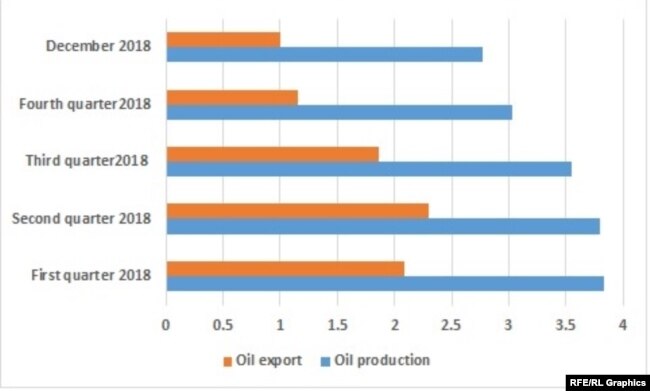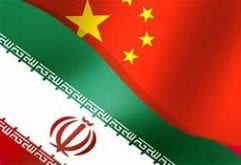RFL/RE – OPEC says Iran’s crude oil production declined about 1.04 million barrels per day (mb/d) to 2.769 mb/d in December from early 2018.
The volume is even less than December 2015, when Iran was still under international sanctions imposed during the Obama administration. A month later those sanctions were eliminated due to implementation of the nuclear deal, called Joint Comprehensive Plan of Action (JCPOA).
The United States withdrew from the nuclear agreement in May 2018 and re-imposed sanctions on Iran, pushing the country’s both oil production and exports down.
The U.S. Energy Information Administration also reported Jan.15 that by December 2018, Iranian crude oil production had declined by more than 1 mb/d from first quarter of 2018 and exports fell at a faster rate than production.
EIA assumes that U.S. sanctions on Iranian oil exports will remain in place at least by the end of 2020. “Furthermore, the current forecast reflects an expectation that reduction exemption waivers issued to eight countries to continue buying Iranian oil will not be extended past May 2019.”
U.S. gave a 6-month wavier in November to China, India, Japan, South Korea, Taiwan, Turkey, Italy, Greece, but only China and India continued Iranian oil intake in a restricted amount.
Turkey stopped November oil intake, but resumed in December, while Japan and South Korea re-started imports in January after several months of suspension. Taiwan, Italy and Greece haven’t purchased Iranian oil at least since October 2018 and there is uncertainty over their future plans.
Iran’s oil production, exports during 2018
Plunging Iranian crude oil exports to about 1mb/d in December from 2.2 mb/d in early 2018 as well as uncertainties over extension of US waivers came as the Iranian government predicted 1.54 mb/d crude oil export for next Iranian fiscal year, starting on March 21.
According to Parliament Research Center, Iranian government eyes income above $26 billion from crude oil exports, setting prices at $54.1/barrel in budget bill.
OPEC also has announced that Iran heavy oil price declined by 12.7% in December month-on-month, but 2018’s average price stood at $67.97/barrel, about 31.5% more than 2017.
EIA forecasts Brent prices (about $2-3 more expensive than Iranian oil) will average $61 in 2019 and $65/barrel in 2020.
OPEC says its overall production in December declined 751,000 b/d, mostly due to falling Saudi Arabia oil output and reached 31.575 mb/d. “Demand for OPEC crude in 2018 – excluding Qatar, which left the Cartel in January 2019 – is estimated at 31.7 mb/d, 1.2 mb/d lower than the 2017 level. In 2019, demand for OPEC crude is forecast at 30.8 mb/d, around 0.9 mb/d lower than 2018”.
EIA also predicted lower demand for OPEC crude, saying that non-OPEC producers would add 2.4 mb/d to the production level in 2019, while the global demand will grow only by 1.5 mb/d.
The lower demand for OPEC oil will not help Iran, as customers can easily shift to exporters who do not have any sanctions issues.
EIA estimates that global petroleum and other liquid fuels inventories increased by 1 mb/d in the fourth quarter of 2018, contributing to downward pressure on oil prices. EIA forecasts global liquid fuel balances will continue to build up in the first half of 2019 at a pace of 0.3 mb/d, before oil markets become more balanced during the second half of 2019.
 Shabtabnews In this dark night, I have lost my way – Arise from a corner, oh you the star of guidance.
Shabtabnews In this dark night, I have lost my way – Arise from a corner, oh you the star of guidance.




